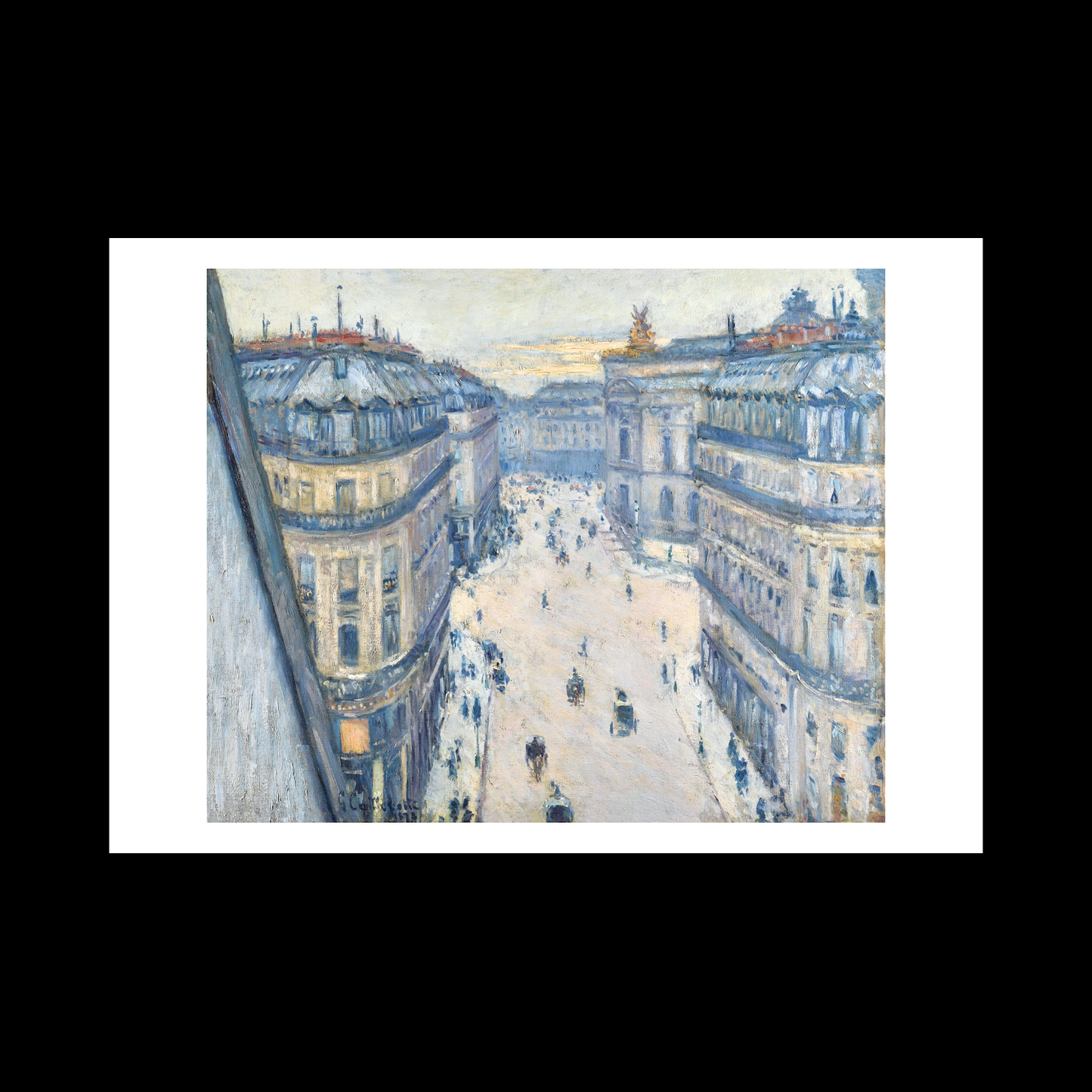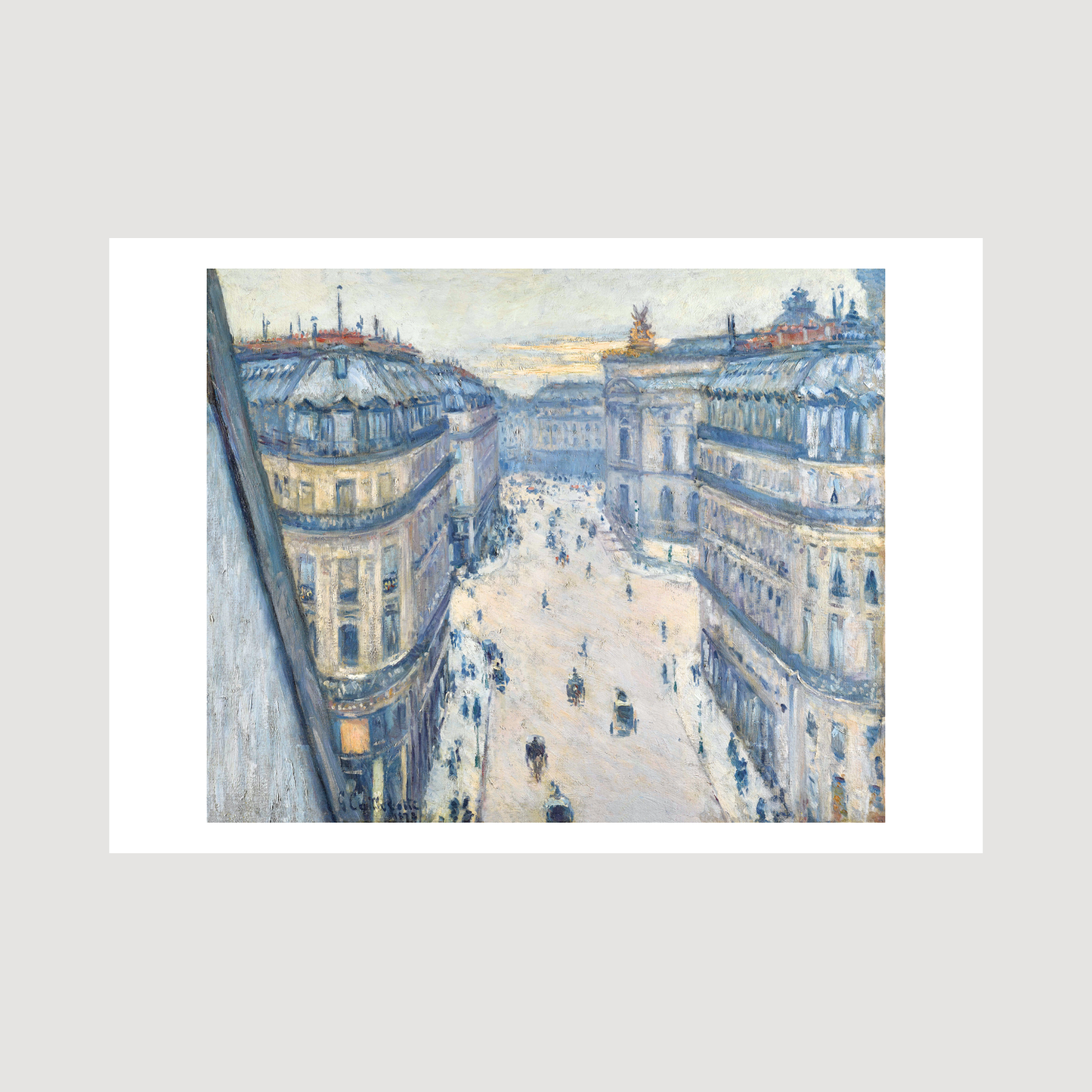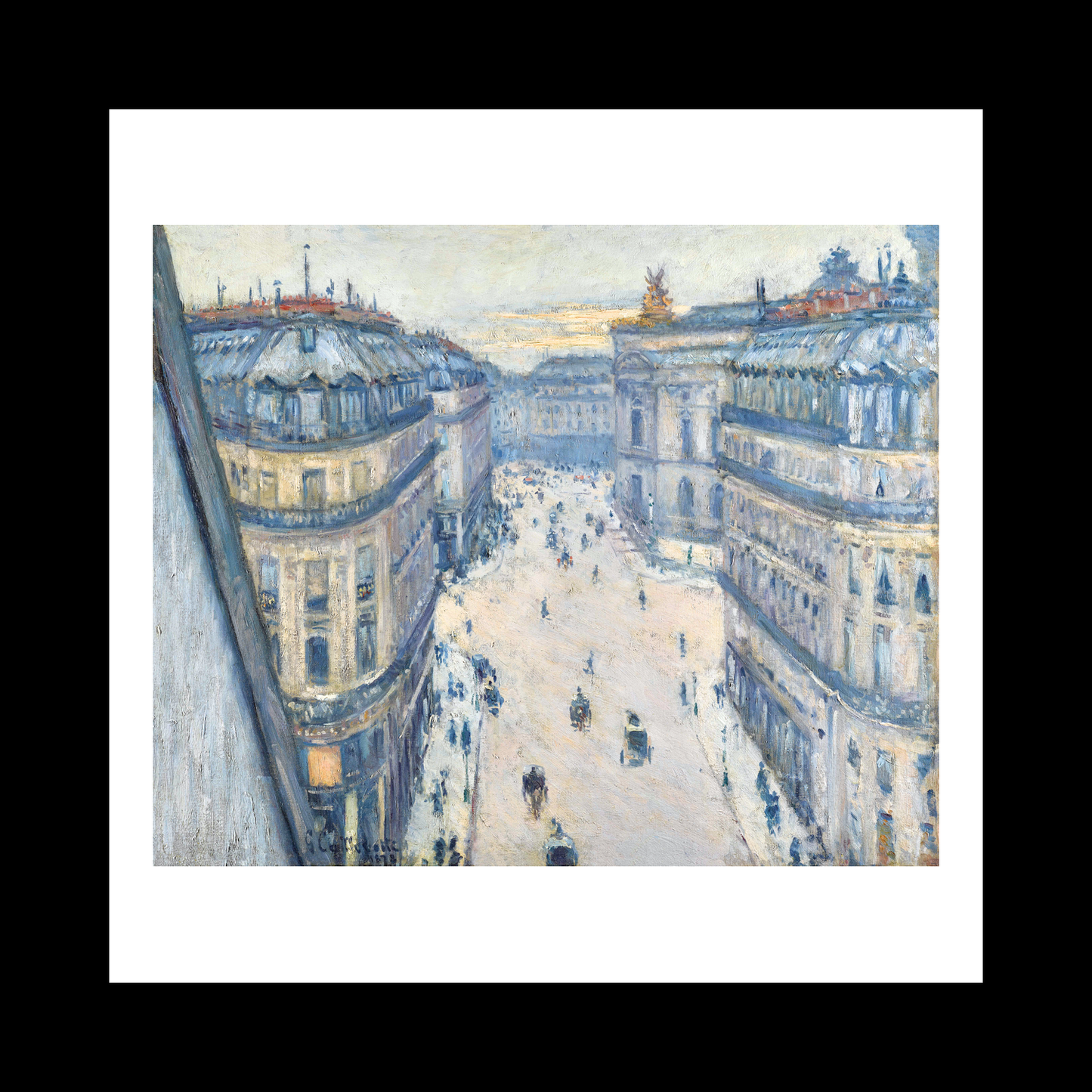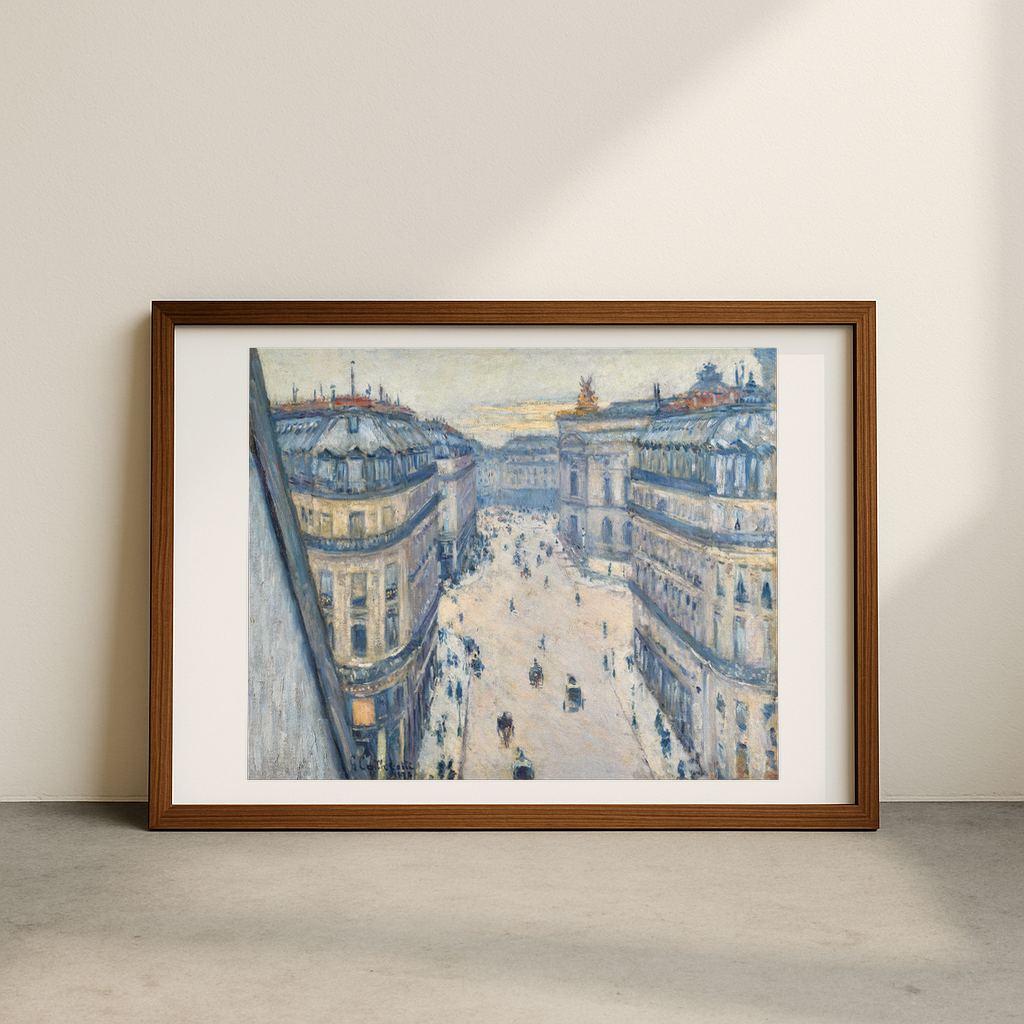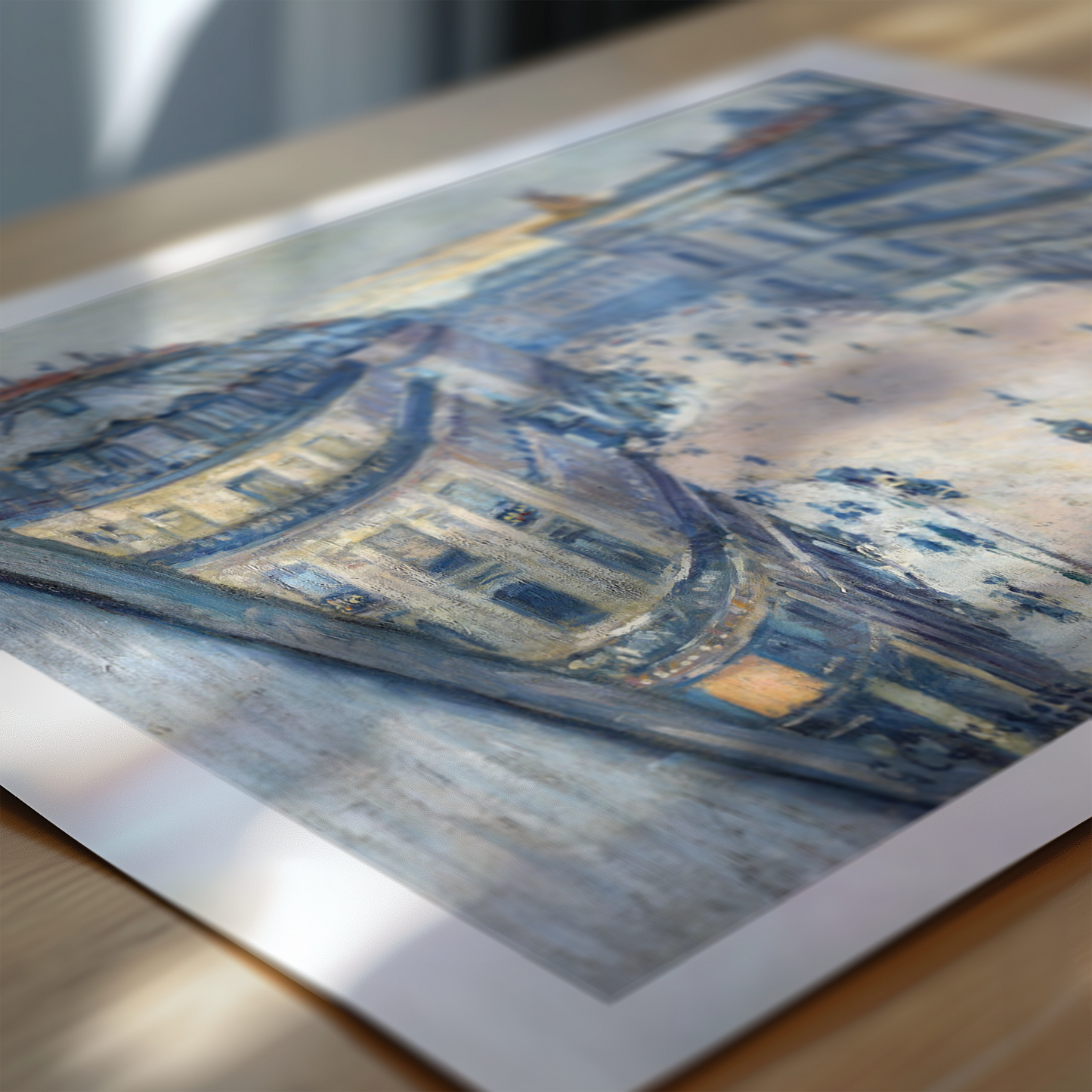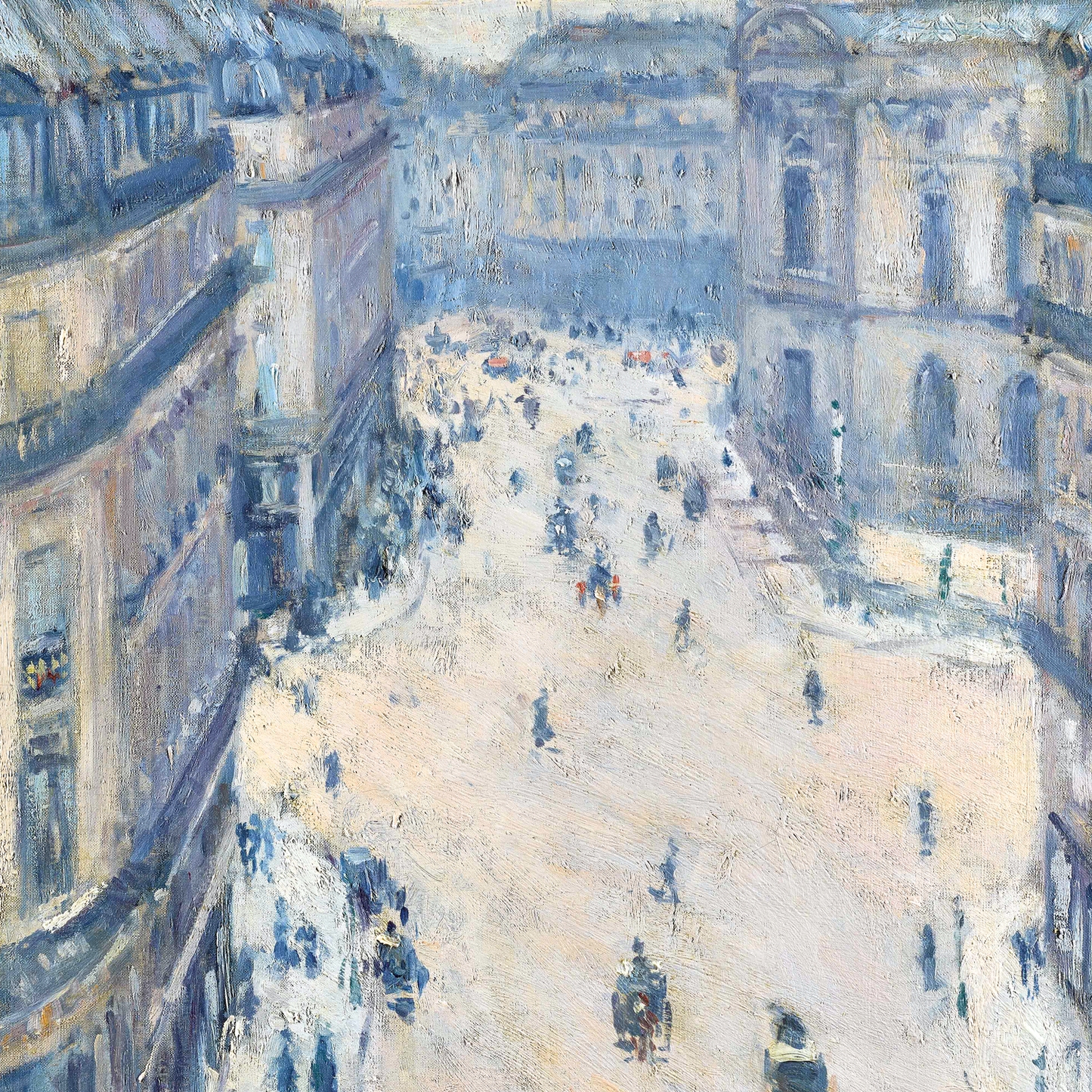1
/
of
6
Halévy Street, View Seventh Floor
Halévy Street, View Seventh Floor
Regular price
£12.45 GBP
Regular price
Sale price
£12.45 GBP
Taxes included.
Quantity
Couldn't load pickup availability
Gustave Caillebotte's 'Halévy Street, View from the Seventh Floor' (1877) offers a striking perspective of Parisian urban life during the late 19th century. The oil painting captures a bird's-eye view of the bustling street below, with Caillebotte masterfully employing steep perspective and careful attention to light and shadow. The artist's choice of viewpoint creates a dramatic downward angle, making viewers feel as if they're peering from a window high above the Parisian boulevard.
As a wealthy patron of the Impressionists who was also a painter himself, Caillebotte was uniquely positioned to capture the modernisation of Paris during Baron Haussmann's extensive urban renewal projects. This particular work reflects the artist's fascination with modern city life and architectural geometry. The painting showcases his distinctive style, which combined Impressionist techniques with more precise, almost photographic realism - a approach that set him apart from his contemporaries like Monet and Renoir.
The work's unusual perspective and composition reveal Caillebotte's interest in Japanese prints, which often employed dramatic viewpoints. The painting depicts the intersection of rue Halévy and boulevard Haussmann, showing the new, wide boulevards that had transformed Paris. The artist's attention to detail is evident in the careful rendering of the building facades, the play of light on the street, and the tiny figures below, all contributing to a powerful sense of urban isolation and modernity. This piece exemplifies how Caillebotte documented the changing face of Paris while experimenting with revolutionary artistic techniques.
View full details
As a wealthy patron of the Impressionists who was also a painter himself, Caillebotte was uniquely positioned to capture the modernisation of Paris during Baron Haussmann's extensive urban renewal projects. This particular work reflects the artist's fascination with modern city life and architectural geometry. The painting showcases his distinctive style, which combined Impressionist techniques with more precise, almost photographic realism - a approach that set him apart from his contemporaries like Monet and Renoir.
The work's unusual perspective and composition reveal Caillebotte's interest in Japanese prints, which often employed dramatic viewpoints. The painting depicts the intersection of rue Halévy and boulevard Haussmann, showing the new, wide boulevards that had transformed Paris. The artist's attention to detail is evident in the careful rendering of the building facades, the play of light on the street, and the tiny figures below, all contributing to a powerful sense of urban isolation and modernity. This piece exemplifies how Caillebotte documented the changing face of Paris while experimenting with revolutionary artistic techniques.
